Address
304 North Cardinal
St. Dorchester Center, MA 02124
Work Hours
Monday to Friday: 7AM - 7PM
Weekend: 10AM - 5PM
Address
304 North Cardinal
St. Dorchester Center, MA 02124
Work Hours
Monday to Friday: 7AM - 7PM
Weekend: 10AM - 5PM

Step into the world of Slovenian flavors, where every dish paints a picture of the diverse traditions in this charming country. Join us as we explore 17 mouthwatering delights that capture the essence of Slovenian cuisine. From humble beginnings to everyday treats, let’s dive into the heart of this lovely nation through its delicious food. Get ready to savor the taste of Slovenia with each delightful bite!

The Carniolan sausage stands out as Slovenia’s most renowned culinary delight, earning the moniker “kranjska” since its official christening in 1896 and garnering protected status in 2015. Originating in the picturesque Gorenjska region, it has since permeated the culinary landscape of the entire country. Esteemed as a culinary cornerstone by the venerable storytellers of historic Ljubljana, the sausage holds a prominent place on the menu during ceremonial and significant occasions. Creating this cherished Slovenian delicacy involves meticulous attention, smoking it to perfection, and ensuring a composition that must include a minimum of 68% pork, 12% beef, and no more than 20% bacon.
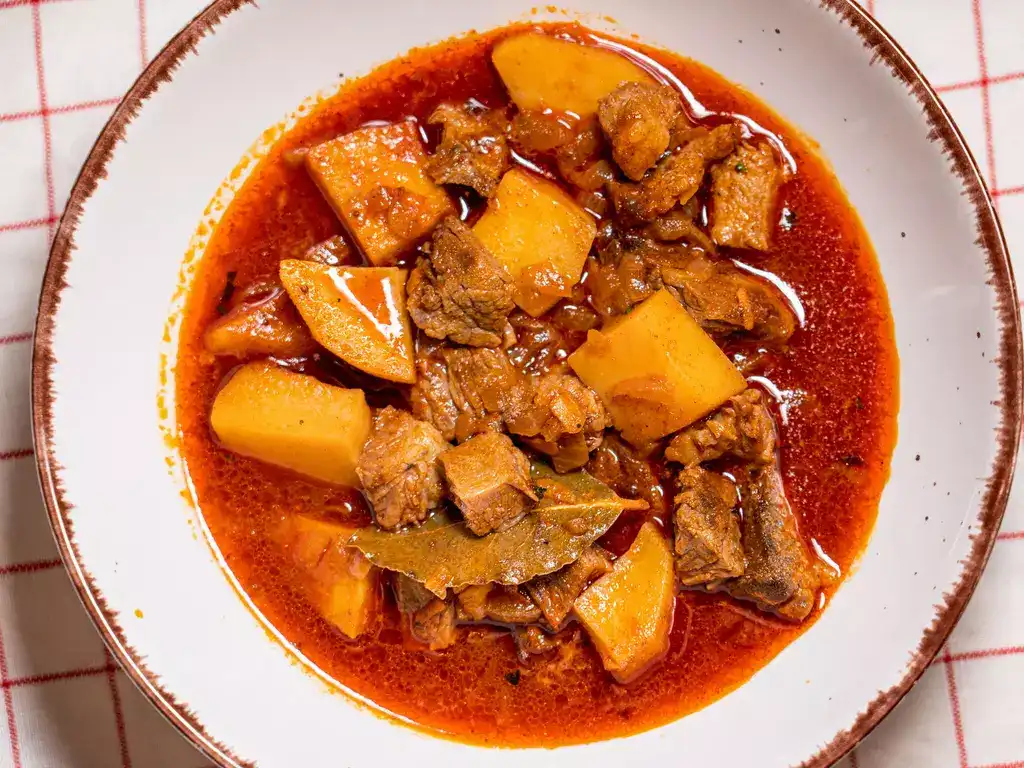
Bograč is a classic Slovenian meat stew said to be cooked up by Hungarian shepherds back in the day when Prekmurje was under Hungarian rule. The stew is a mix of four types of meat – usually pork, beef, venison, and boar. It’s cooked together with potatoes, onions, spices, wine, and you can toss in mushrooms if you’re feeling fancy.
The dish derives its name from the bogracs, a traditional pot still in use today to concoct this tasty stew. It’s akin to hosting a flavorful meat party, where veggies, spices, and a touch of wine mingle together in this iconic pot. The magic of the bogracs imparts deliciousness to Bograč, making it a genuine symbol of Slovenian food cherished for ages.
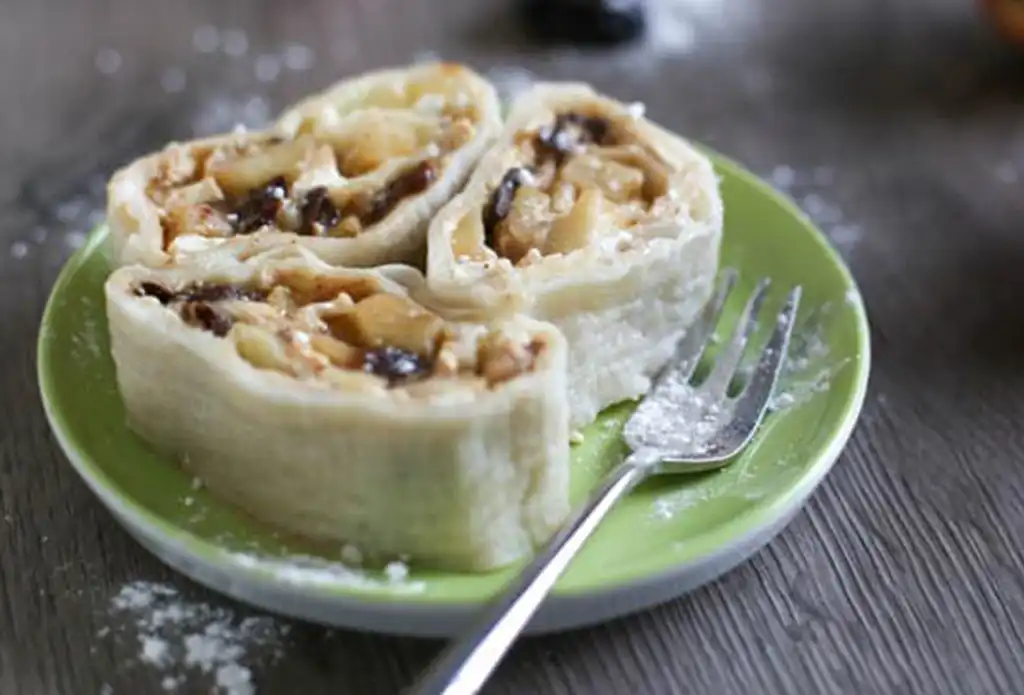
Štruklji stands out as one of Slovenia’s most iconic dishes, showcasing a delightful blend of rolled dough filled with a variety of savory or sweet ingredients, ranging from cottage cheese and walnuts to apples and poppy seeds. Whether crafted in home kitchens, bustling restaurants, or cozy mountain huts, Štruklji has become a culinary symbol, deeply rooted in Slovenian gastronomy.
Enjoy this versatile dish baked or cooked, with a unique twist stealing the spotlight during the vibrant seasons of spring and summer. Picture Štruklji bursting with the freshness of tarragon, creating a delightful harmony of flavors.
Originally, Štruklji was a festive treat, marking the conclusion of hard labor on farms. The tradition persisted until the 1930s, when Štruklji’s popularity soared, transcending seasonal boundaries and becoming a beloved year-round indulgence. Today, this culinary gem continues to grace tables, embodying the rich history and flavors that define Slovenian cuisine.
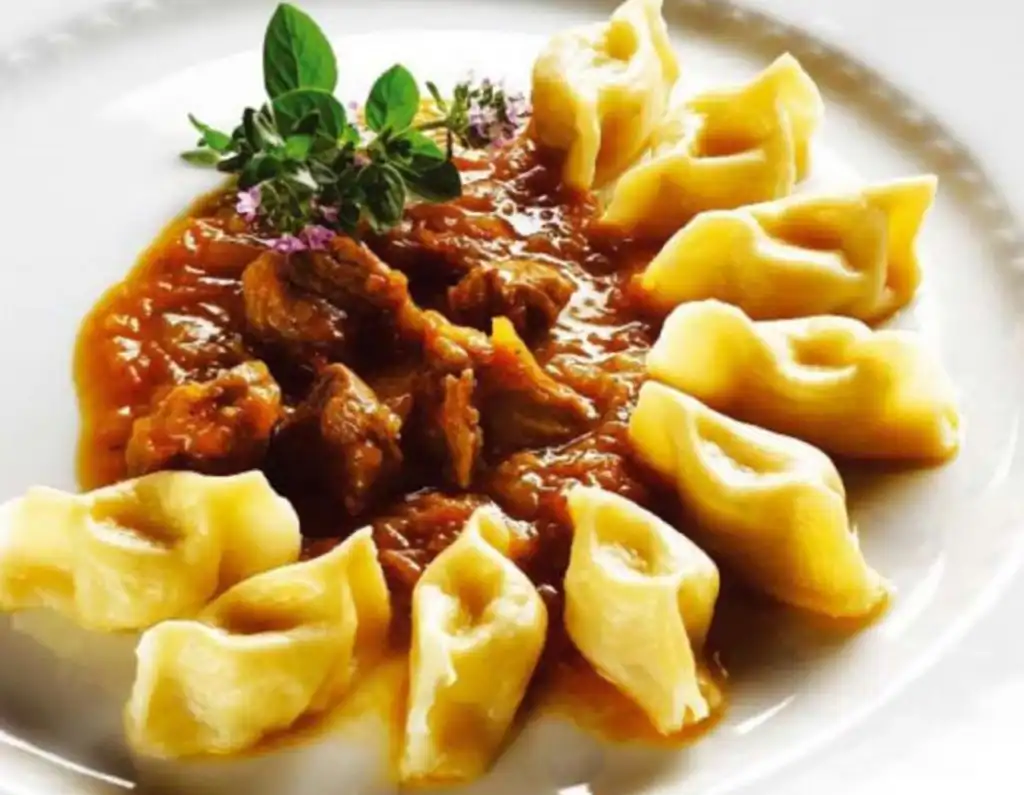
Originating from the lovely town of Idrija in western Slovenia, žlikrofi is a popular pasta dish that’s like a special kind of ravioli. These cute little pasta pockets have a unique bicorne hat shape, created by wrapping two layers of thin pasta dough around a filling that steals the show – a tasty mix of authentic potatoes.
Since people started talking about this yummy Slovenian dish, the recipe hasn’t changed much. The first mention of žlikrofi comes from a 1936 book called “Naš Idrijski Kot,” where the author talks about how people used to make these special pasta treats on important occasions. The fillings back then could be anything from potatoes to meat or turnip mash.
While some may draw parallels between Idrijski žlikrofi and the Austrian Schlickkrapferl – both featuring dumplings filled with unique ingredients like offal and fresh herbs – the true origin of žlikrofi remains uncertain. Regardless of their inception, indulging in žlikrofi is like embarking on a delightful journey to the town of Idrija, savoring a taste of its delectable culinary history.
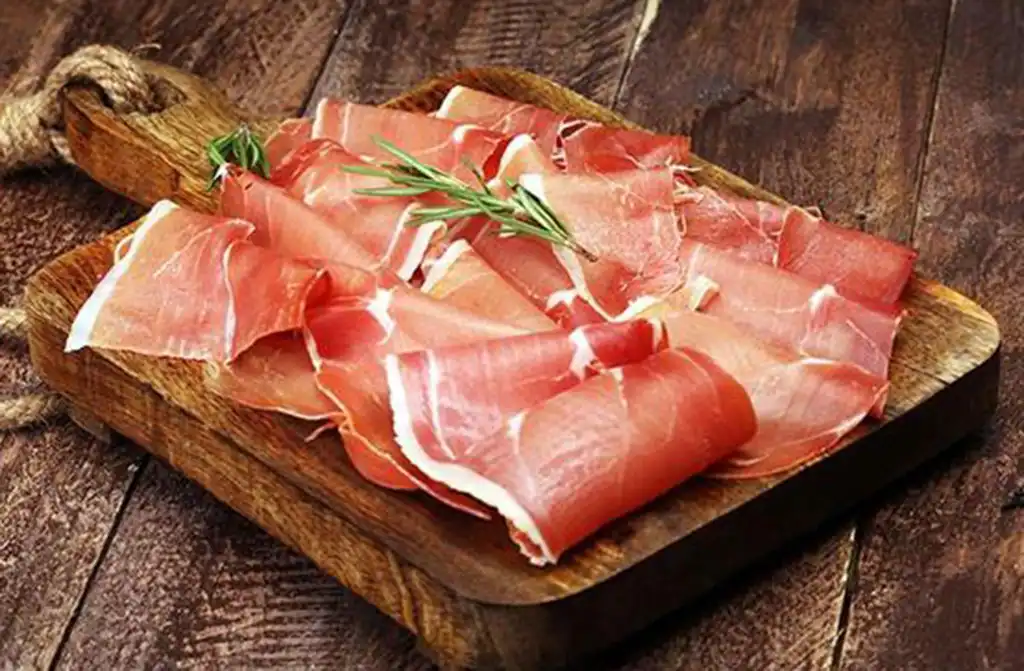
Meet the star of Slovenian cured meats – Kraški pršut, also known as Karst prosciutto or just Karst ham, carrying a tradition of over a hundred years. This ham, not smoked but dry-cured, gets its special flavor from the unique climate in the Karst region, where it dries and ages in a special way.
Even with all the fancy technology around, the makers of this special ham adhere to old-school methods. Packed with vitamins and minerals, this super-nutritious dry-cured ham boasts more protein than regular cooked meat. The meat undergoes a double dose of salt using chunky salt from the Slovenian coast and then ages at a temperature of around 12-16°C.
This ham undergoes a natural drying process without any heat or smoke, relying on traditional Slovenian skills. It begins drying immediately after salting and exposure to the air, and after a while, the salt is washed off. To eliminate the last traces of natural juices, the ham is pressed into its distinctive flat shape, resembling a guitar, and readied for its aging journey, lasting about 12-16 months, depending on its size. Best enjoyed thinly sliced, almost see-through, Kraški pršut stands as a top-notch cold appetizer, typically served with homemade bread, cheese, olives, or sometimes the sweet goodness of melons.
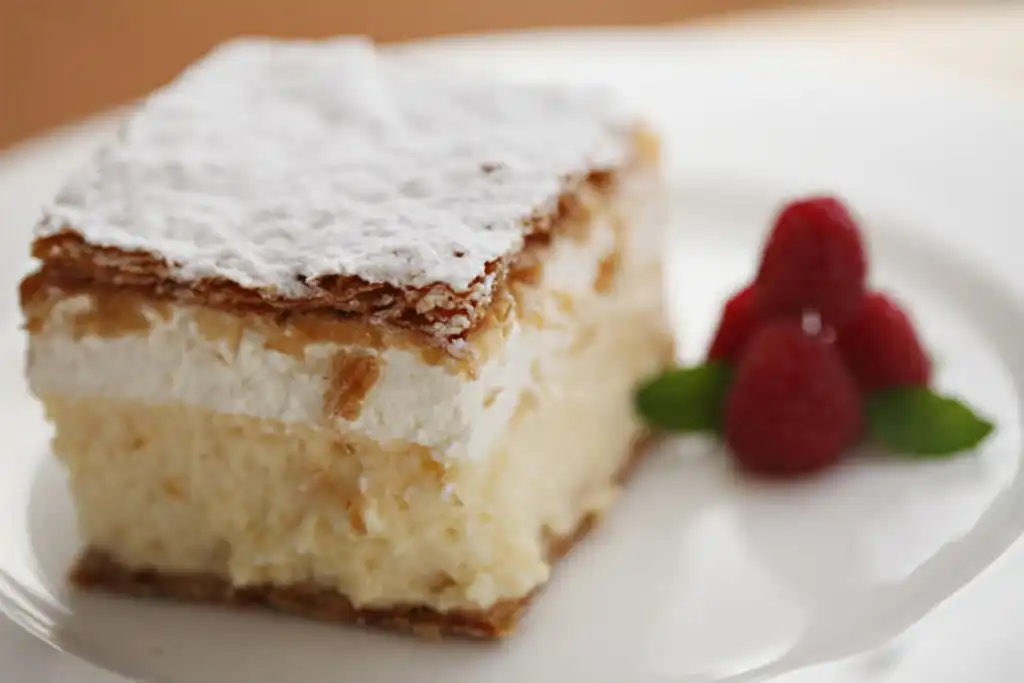
Kremna rezina, a delightful treat from Slovenia’s Lake Bled area, is a creamy cake that starts with a golden, crispy, buttery base. It’s like a layer cake, with yummy vanilla custard, smooth whipped cream, and a thin, buttery dough on top.
You’ll often find it dusted with powdered sugar and served in neat little cubes. The story of kremna rezina, also known as Bled cream cake, goes back to Chef Ištvan Lukačević at Bled’s Park Hotel. In 1953, he gave the Hungarian cream cake a twist by adding just the right amount of whipped cream.
The result was a hit, quickly becoming a favorite among tourists, with a whopping 3,500 slices sold every day. What makes the authentic kremna rezina special is not just its taste but the care that goes into making it. The pastry is folded seven times, the custard is cooked for seven minutes, and each cake is cut into a neat seven-by-seven centimeter square. These little details turn kremna rezina from a simple cake into a delicious piece of Slovenian dessert history.
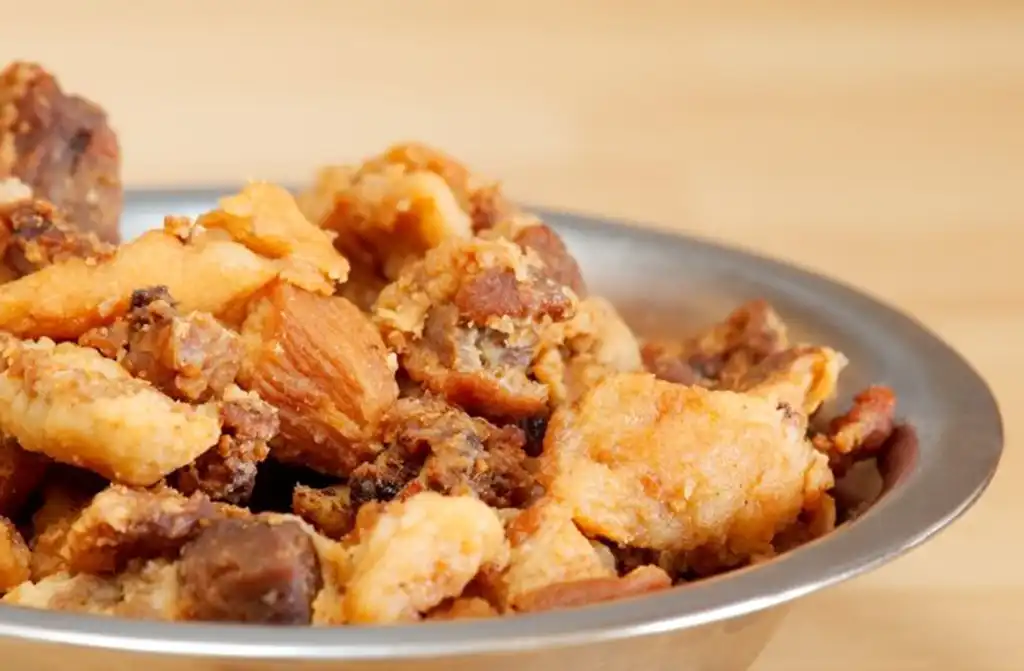
Čvarci or ocvirki, a cherished traditional delight popular in Southeastern Europe and the Balkans, are a distinctive form of homemade pork rinds or cracklings. This culinary gem is crafted by extracting fat from lard, which is cut into blocks and fried in its own rich goodness. The result? A delectable concoction where the luscious fat melts away, leaving behind robust and crispy pork rinds in the pot.
Throughout the cooking process, čvarci are diligently stirred with oversized spoons, and sometimes, milk is introduced to impart a delightful caramel hue. Salt is a common addition, while some culinary enthusiasts opt to elevate the flavor with hints of garlic or onions. Typically prepared in late autumn or winter, often coinciding with pig slaughter traditions, čvarci emerge as a beloved snack, perfectly complemented by slices of bread and raw onions. Enjoyed in the company of beer or rakija, these cracklings add a savory touch to social gatherings.
Beyond being a standalone treat, smaller pieces of čvarci find their way into savory snacks, such as the delightful pogačica s čvarcima. Whether relished on their own or incorporated into savory creations, čvarci embody a culinary tradition steeped in warmth, flavor, and the spirit of communal feasting.
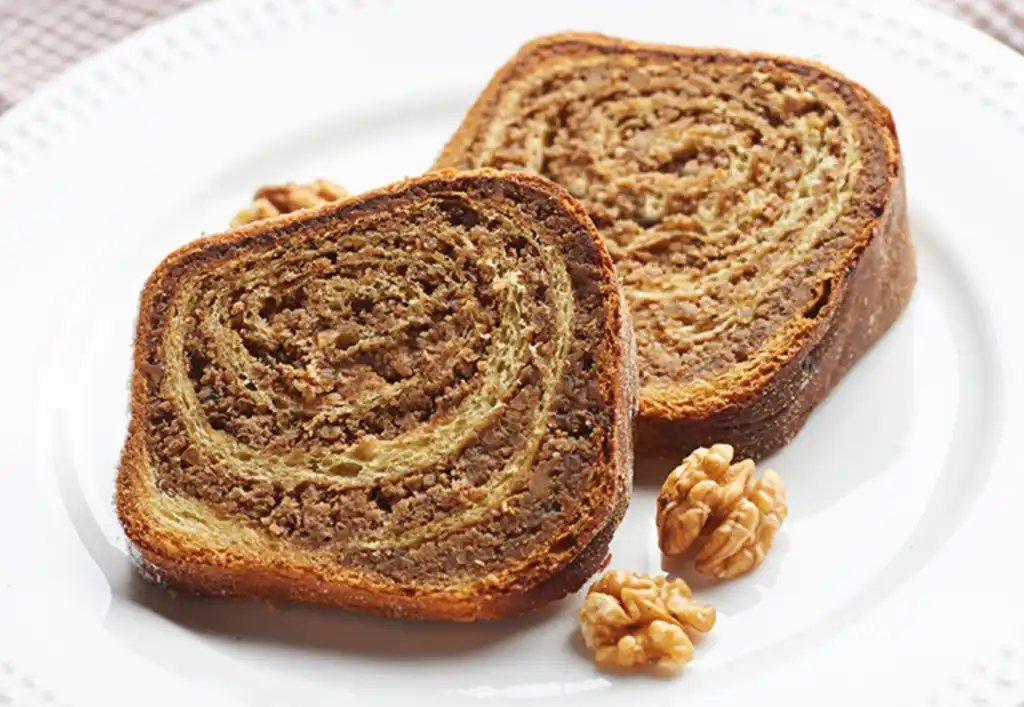
Potica, a revered gem in Slovenian culinary heritage, holds a distinctive place in the nation’s food history. This delightful pastry, characterized by its thin and delicate dough, is skillfully rolled and filled with a variety of sweet or savory ingredients. Among the plethora of over 80 different potica fillings, several stand out for their widespread popularity and delectable appeal.
One of the most renowned versions is tarragon potica (Pehtranova), distinguished by its filling of ground tarragon leaves, sugar, and other elements that impart a distinct, slightly acidic, and herbal flavor, setting it apart from other sweet fillings. Another traditional variant is walnut potica (Orehova), where finely ground or cut walnuts are blended with sugar, milk, and occasional spices like cinnamon, resulting in a rich, nutty, and sweet combination enjoyed by many.
Cracknels (Ocvirki), also known as “ocvirki” in Slovenian, are crispy slices of fried or roasted pork fat. When used as a filling, they provide a savory and delightful contrast to the sweet dough, making this type of potica a special treat. The flavor of poppy seed potica (Makova) is delightfully nutty, with crushed poppy seeds blended with sugar and sometimes a touch of honey, spread across the dough to create a sweet and slightly crispy filling.
Potica takes center stage on significant occasions and holidays in Slovenia, such as Christmas and Easter, becoming an indispensable part of festive celebrations. The preparation of potica is an art passed down through generations, requiring skill to achieve the right thinness and texture of the dough. Each region in Slovenia may boast its unique variation, showcasing the country’s culinary traditions’ diversity and cultural depth. Whether sweet or savory, potica is a delectable taste of Slovenian culture that every visitor should savor.

Prekmurska gibanica, also known as Prekmurian Layer Cake, is a delightful and unique treat originating from the Prekmurje area in northeastern Slovenia. Celebrated for its rich and flavorful medley of ingredients, this cake holds a place of honor in the region. The name, “Over-Mura Moving Cake,” pays homage to Prekmurje’s historical ties to the Mura River, suggesting that the cake is not only dynamic but also fulfilling, thanks to its intricate layers and diverse flavors.
Crafting Prekmurska gibanica involves layering various sweet ingredients to create a harmonious blend of flavors and textures. The classic recipe includes four distinct fillings: Poppy Seeds (Makov Nadev) for a nutty, subtly sweet, and slightly crunchy dimension; Cottage Cheese (Skutin Nadev) featuring a mix of cottage cheese, sugar, eggs, and vanilla for a creamy and slightly tangy contrast; Walnuts (Orehov Nadev), whether chopped or ground, bring a rich, nutty flavor and delightful crunch; and Apples (Jabolka), sliced or shredded, contributing a refreshing touch and natural sweetness to the dessert.
Prekmurska gibanica stands as an emblem of Slovenian culinary excellence, cherished by the people of Prekmurje and gracing festive occasions and holidays. The recipe and name are safeguarded by a “Recognized Trademark of Traditional Reputation,” ensuring adherence to the original recipe and name to preserve its tradition and flavors for generations to come. When in Prekmurje, indulging in a slice of this delightful cake is a must to truly savor the essence of the region’s flavors.

Žganci stands as a cherished gem in Slovenian cuisine, epitomizing the robust and heartwarming essence of the country’s culinary heritage. This humble yet delightful dish, crafted primarily from flour—often buckwheat flour—offers a versatile canvas, adapting seamlessly to various culinary preferences.
Žganci originate from a straightforward blend of flour and liquid, typically water. The most prevalent iteration involves the use of buckwheat flour, imparting a rustic, slightly nutty undertone to the meal. A classic pairing involves serving žganci with cracknels, colloquially known as “ocvirki” in Slovenian. These crispy nuggets of fried or roasted pork fat provide a savory, crunchy counterpoint to the soft žganci, creating a harmonious balance of textures and flavors.
While žganci are often enjoyed with cracknels, their adaptability shines through in diverse culinary contexts. By omitting cracknels, one can create a wholesome version of žganci that pairs seamlessly with an array of sides, including sour milk, mushroom soup, cabbage, or chicken stew.
Žganci carries a distinct association with rural and country-style Slovenian cuisine, earning its reputation as a traditional farm dish. Its hearty and nourishing nature positions it as a preferred choice for hardworking farmworkers, embodying a connection to Slovenia’s agricultural roots. Beyond its humble origins, žganci’s versatility and comforting appeal make it a timeless and beloved element of the Slovenian culinary tapestry.
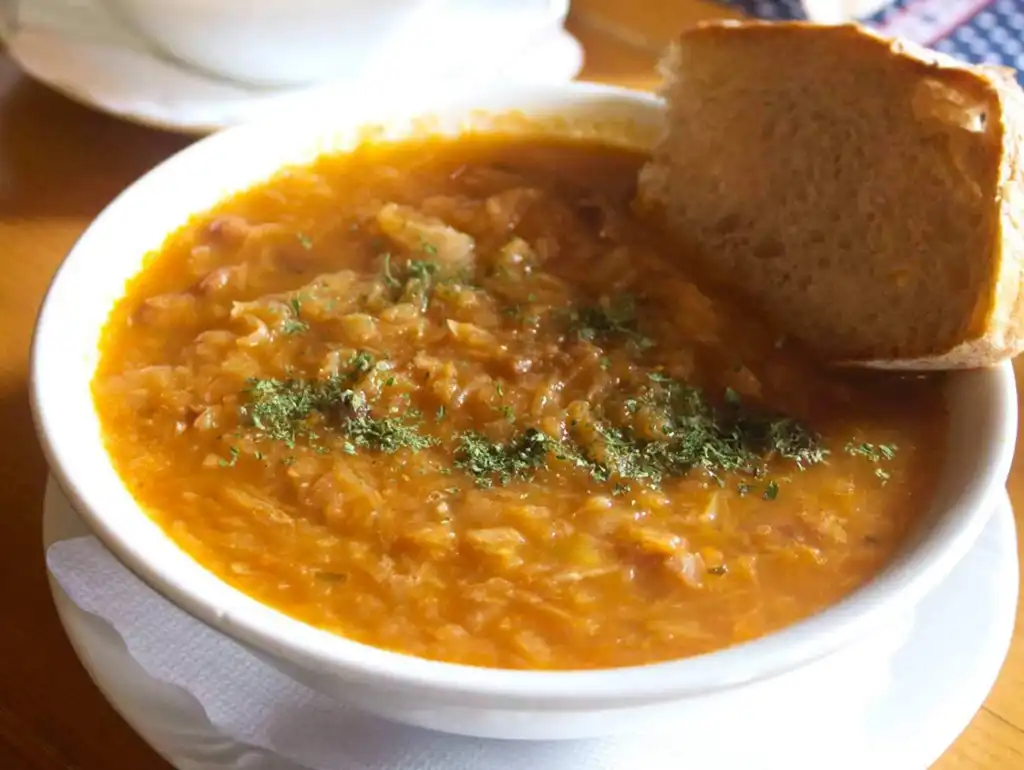
Jota, or “Yota,” embodies the heart and soul of Slovenian cuisine, showcasing the nation’s prowess in crafting robust and flavorful meals with humble, readily available ingredients.
Winter Dish: Rooted in necessity, Jota is a culinary marvel born from resourcefulness during the winter season. Ingenious housewives made the most of winter-storable essentials like turnips, cabbage, potatoes, and beans to create a wholesome and warming dinner, demonstrating a keen understanding of local ingredients.
Regional Variations: Jota’s culinary landscape spans across Slovenia, with regional nuances that reflect local preferences and ingredient availability. In the seaside region of Primorska, Jota might feature prosciutto, while other areas might infuse sausage or smoked meats for an added burst of flavor, adding a touch of regional flair.
Preparation: Crafting Jota is a simple yet rewarding process. Sauerkraut undergoes a thorough rinse to temper its acidity before joining forces with beans, potatoes, and an array of spices. The ingredients simmer to perfection, resulting in a hearty stew-like texture that captures the essence of comfort food.
Cultural Significance: Jota is not just a dish; it’s a cultural icon in Slovenia. Symbolizing resourcefulness and the art of creating delightful meals from basic resources, Jota has stood the test of time. Passed down through generations, it is cherished for its substantial and satisfying qualities, embodying the essence of Slovenian culinary heritage.
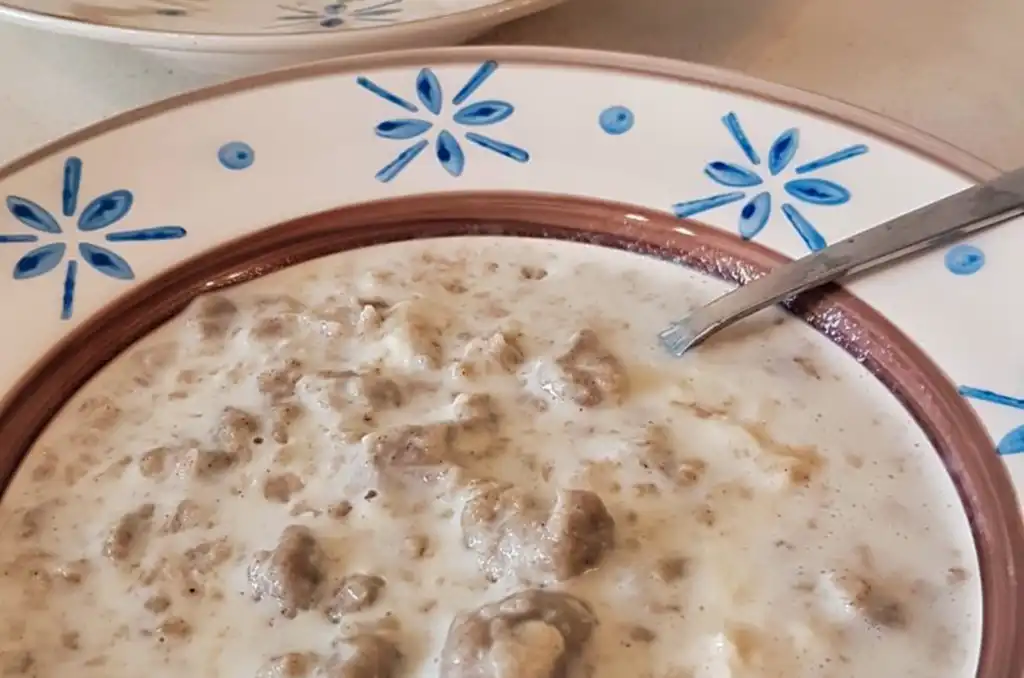
Močnik stands as a timeless and rustic cornerstone of Slovenian cuisine, with deep roots in the culinary traditions of the Lower Carniola (Dolenjska) region. This recipe is a testament to the resourcefulness and ingenuity of Slovenian cooks, showcasing their skill in transforming simple, widely available ingredients into a symphony of flavors.
Diversity is at the heart of Močnik, thanks to its blend of various flours, with milk, buckwheat, and maize being the most common varieties. Each flour brings a unique flavor and texture to the dish, creating a culinary experience that is both rich and diverse. Crafting Močnik is a straightforward process, primarily involving the combination of flour with water or milk, cooked to a thick, porridge-like consistency.
The versatility of Močnik shines through in its serving options, adapting to regional tastes. Some savor it as a standalone dish, while in other places, it transforms into a key ingredient in a clear soup, creating a wholesome and delicious dinner. Particularly favored during colder months, Močnik provides both warmth and nourishment, thanks to its hearty and comforting nature.
Močnik’s creamy, porridge-like consistency, coupled with the distinct flavors of various flours, culminates in a delectable and enjoyable meal. Beyond its gastronomic appeal, Močnik is deeply rooted in history, a testament to Slovenian cooks’ ability to create nourishing meals from modest ingredients. Passed down through generations, Močnik holds a cherished place in family traditions, appreciated for its comforting and gratifying qualities that transcend time.
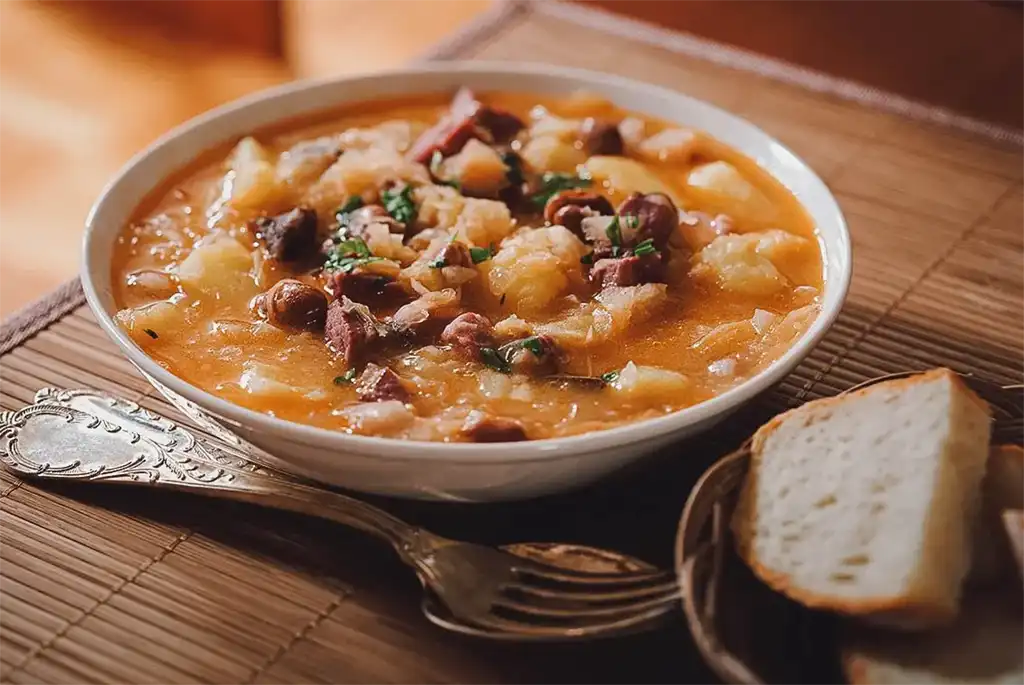
Pohorski pisker, a robust stew rooted in the scenic hills of Pohorje in Styria, northeastern Slovenia,
is a culinary gem born in the picturesque hills of Rogla. This flavorful stew harmoniously blends at least three types of meat, mushrooms, barley, and potatoes.
In true Slovenian fashion, variations abound, especially in the choice of meats and vegetables used in its preparation. The charm of pohorski pisker lies not only in its rich ingredients but also in the regional nuances that make each version uniquely delightful.
For an authentic experience, it is said that pohorski pisker should be cooked over an open flame with meticulous stirring to prevent sticking to the pot’s bottom. To savor the most genuine rendition, consider attending the dedicated festival held in Pohorje every summer, where the tradition of this flavorful dish takes center stage.

Obara, a robust meat and vegetable soup originating from the Štajerska region of Slovenia, stands out among other Slovenian stews like barley stew, goulash, and yota stew due to its diverse array of vegetables and meats.
Named after the primary meat used in its preparation, the stew commonly appears as chicken obara or beef obara. Carrots, turnips, green beans, peas, and onions typically form the ensemble of vegetables in this hearty dish.
Traditionally reserved for festive occasions on Sundays and Slovenian holidays, obara has transitioned into an everyday dish in modern times. When served in a traditional Slovenian gostilna, it’s often accompanied by buckwheat or potato žganci, adding a hearty touch to the meal.
Obara, a beloved traditional Slovenian delight, finds its true essence on a chilly winter’s day. If you’re up for it, explore our Obara recipe to savor the comforting goodness of this one-pot stew in the comfort of your own kitchen.
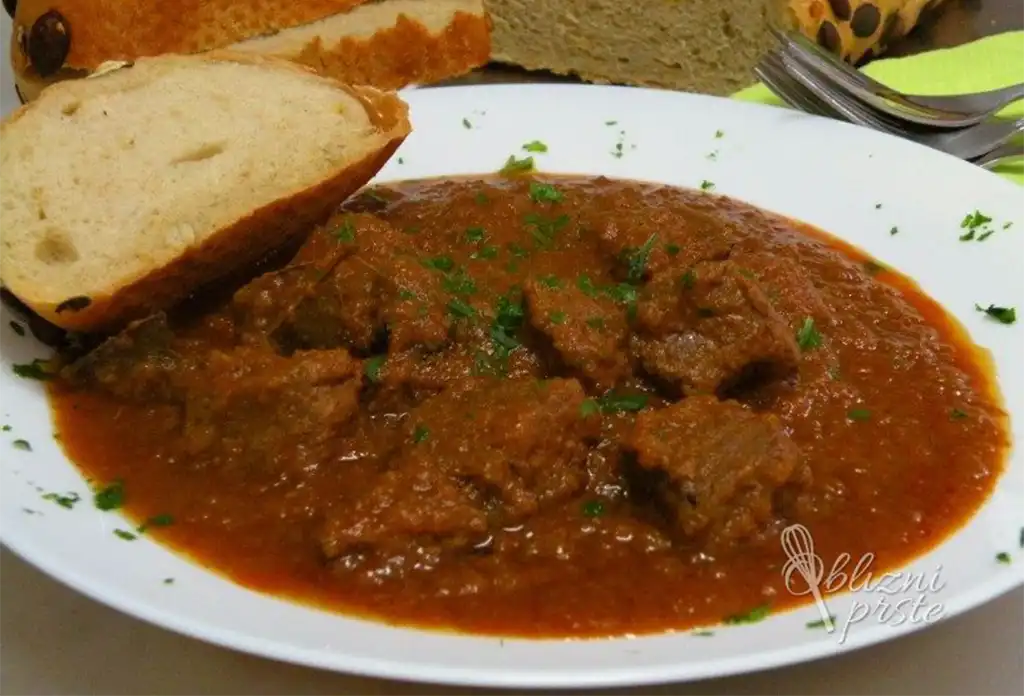
Golaž, or goulash, is a Slovenian meat stew that draws inspiration from Hungarian and Austrian culinary traditions. This hearty dish features a harmonious blend of diced onions and beef flank chunks, infused with the vibrant hues and flavors of tomato paste and paprika.
To begin, onions are sautéed until tender over a gentle flame before introducing a medley of goulash spices. This aromatic mix typically includes marjoram, caraway seed, sweet and sharp paprika, and a pair of essential bay leaves – a hallmark of authentic goulash.
Following the spice infusion, beef chunks join the fray, braising in a savory blend of tomato sauce and red wine. The longer the stew simmers, the richer and more delectable it becomes, with the general consensus that goulash reaches its pinnacle of flavor the day after preparation.
Traditionally, goulash is served alongside a bread roll or paired with accompaniments like polenta, bread dumplings, pasta, potato salad (or puree), or spoon bread. This beloved meat dish is a staple in Slovenia and across European countries such as Czechia, Slovakia, Romania, and Serbia. You can find it gracing the menus of traditional Slovenian restaurants and many mountain huts, providing a comforting and satisfying experience after a day of work or a rewarding hike.
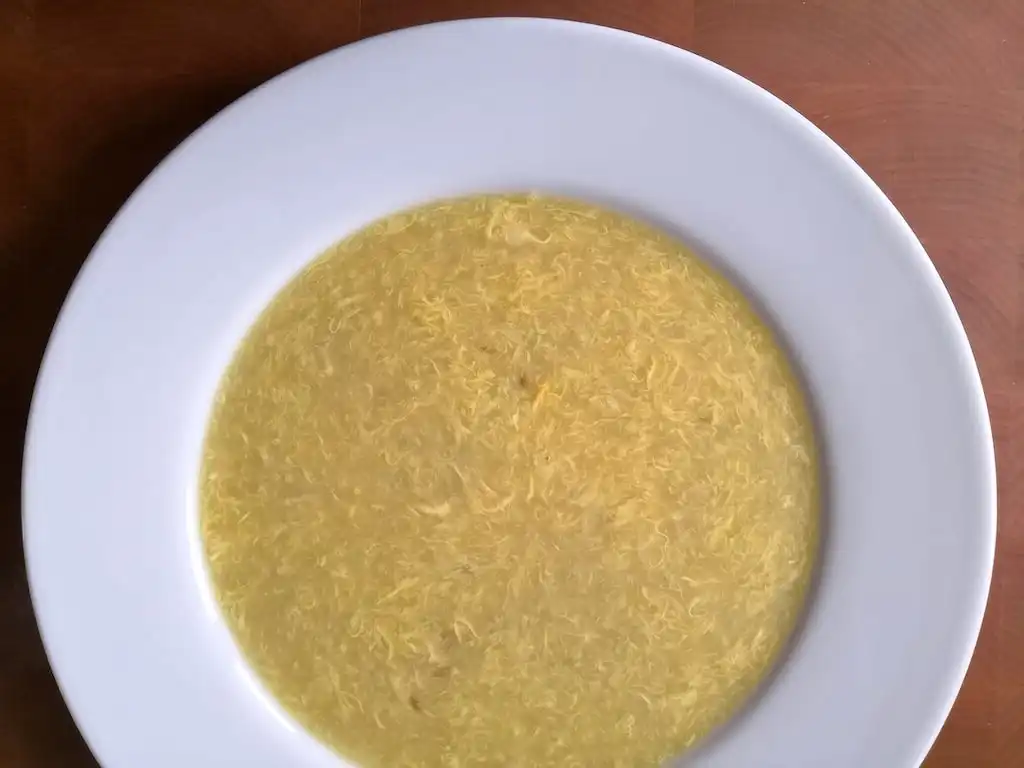
Prežganka, affectionately known as “Prežgana župa,” is a cherished icon in Slovenian culinary tradition, celebrated for its simple yet distinctive flavors that resonate across the country. Esteemed for its comforting and soothing qualities, it holds a special place in the hearts of many.
This traditional Slovenian soup is crafted by expertly roasting or browning flour, imparting a unique and subtly nutty undertone that defines its flavor profile. The meticulous roasting process transforms the flour, bestowing upon the soup its characteristic taste. Typically comprised of wheat, water, and salt, Prežganka stands out as a warming and easily digestible meal, making it an excellent choice for those with digestive sensitivities.
A distinguishing feature of Prežganka is the addition of a scrambled egg once the soup reaches a boil. This culinary touch contributes richness and texture, resulting in a velvety, creamy consistency that elevates the overall dining experience.
Beyond its delicious appeal, Prežganka boasts a rich history in Slovenian cuisine and holds a special connection with the Trieste countryside. Its simplicity and delicate flavors make it not only a popular choice but also a dietary ally for individuals with digestive difficulties, given its mild and easily digestible nature.
Prežganka, with its unassuming yet captivating essence, encapsulates the warmth of Slovenian hospitality and culinary finesse, making it a beloved choice for those seeking both comfort and nourishment.

Štefani Pečenka, a classic Slovenian delight, is a savory meatloaf adorned with a surprise – hard-boiled eggs at its core. This beloved dish, spotlighted during festive times like Easter, graces Slovenian tables with its culinary charm.
Creating Štefani Pečenka involves blending ground meat with breadcrumbs, onions, garlic, herbs, and spices. The art lies in shaping the loaf around hard-boiled eggs, baking to perfection. Slicing unveils the stunning surprise, making it a visual and flavorful centerpiece for holiday feasts.
Beyond its gastronomic appeal, Štefani Pečenka holds cultural significance, bringing Slovenian families together during holidays. Its uniqueness extends beyond pork’s rich flavor to the delightful revelation of hard-boiled eggs, showcasing Slovenia’s culinary prowess and traditions. Štefani Pečenka embodies both culinary artistry and the joy of shared meals during special occasions.
In summary, Slovenian cuisine reflects a delightful fusion of influences, creating a culinary tapestry that mirrors cultural diversity and regional connections. Rooted in humble origins, these dishes showcase Slovenia’s culinary evolution. Once reserved for grand celebrations, many are now enjoyed daily. When in Slovenia, seize the chance to explore this diverse and delicious array of Slovenian food.